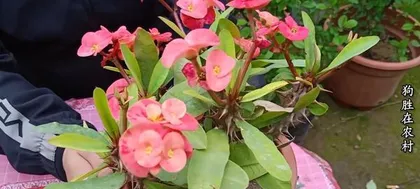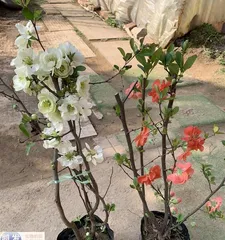Begonia is a beautiful flower and one of the important flowers in traditional Chinese culture. It is beautiful and graceful, deeply loved by people, and has high ornamental value. If you want to grow beautiful begonias at home, then please read this article. This article will introduce you to the methods and techniques for home care of begonias.

Planting Basics
Before planting begonias, you first need to understand some basic knowledge. Begonias prefer a warm and humid environment and enjoy sufficient light but do not like strong sunlight exposure. When choosing a planting location, select a place with moderate sunlight, good ventilation, and fertile soil.
Soil Requirements
Begonias prefer acidic soil, so when planting, choose acidic soil or add acidic fertilizer. At the same time, the soil also needs to be kept moist but not overly wet.

Watering Methods
During the growth period, begonias need adequate water supply. However, note that you should not let the soil in the pot become too wet, otherwise it can easily cause pests and diseases. Therefore, when watering, keep it moderate and avoid overwatering.
Fertilization Methods
Begonias need fertilization to grow healthier and more beautiful. The best time for fertilization is during the growth period, giving an appropriate amount of liquid fertilizer every two weeks or so.
Pruning Methods
After the flowering period ends, you need to prune the begonias. Prune the branches to about 10 cm from the stem, which can promote faster growth of the plant.

Pest and Disease Prevention
Begonias are susceptible to pests and diseases such as aphids and leafrollers. Regularly inspect the plants and take timely measures to control them if pests or diseases are found.
Avoid Cold
Begonias are not cold-tolerant and need special attention for warmth in cold weather. In winter, measures such as covering or indoor cultivation can be taken to ensure a warm and comfortable growing environment for the plants.
Suitable Temperature
During the growth period, the suitable temperature for begonias is 15°C to 25°C. In summer heat, avoid direct sunlight and appropriately lower the indoor temperature to maintain a suitable growing environment.
Moderate Pruning
During the growth period of begonias, they need moderate pruning. Prune excessively long and dense branches to maintain an elegant shape and promote faster growth of the plant.
Flowering Period Management
The flowering period of begonias is generally from spring to autumn, lasting a long time. During the flowering period, pay attention to managing the begonias, such as appropriate watering and fertilization, to ensure the plants grow healthier and more beautiful.
Control Herbaceous Plants
When planting begonias, control the range of surrounding herbaceous plants. Herbaceous plants compete for nutrients and water, affecting the growth of begonias. When planting begonias, control the range of surrounding herbaceous plants.
Note on Light
Begonias need sufficient light during the growth period, but should not be exposed to strong light. When choosing a planting location, select a place with moderate sunlight and good ventilation, or appropriately control light indoors.
Note on Ventilation
Begonias need proper ventilation to maintain air circulation. When choosing a planting location, select a well-ventilated place, or appropriately control ventilation indoors.
Avoid Over-fertilization
Begonias do not require excessive fertilization; over-fertilization can easily harm the plants. When fertilizing, give an appropriate amount, such as liquid fertilizer every two weeks or so.
As a beautiful flower, begonias can be easily grown at home. As long as you follow the correct methods and techniques and master the key points of begonia care, you can surely grow beautiful begonias at home.
<|end_of_box|>